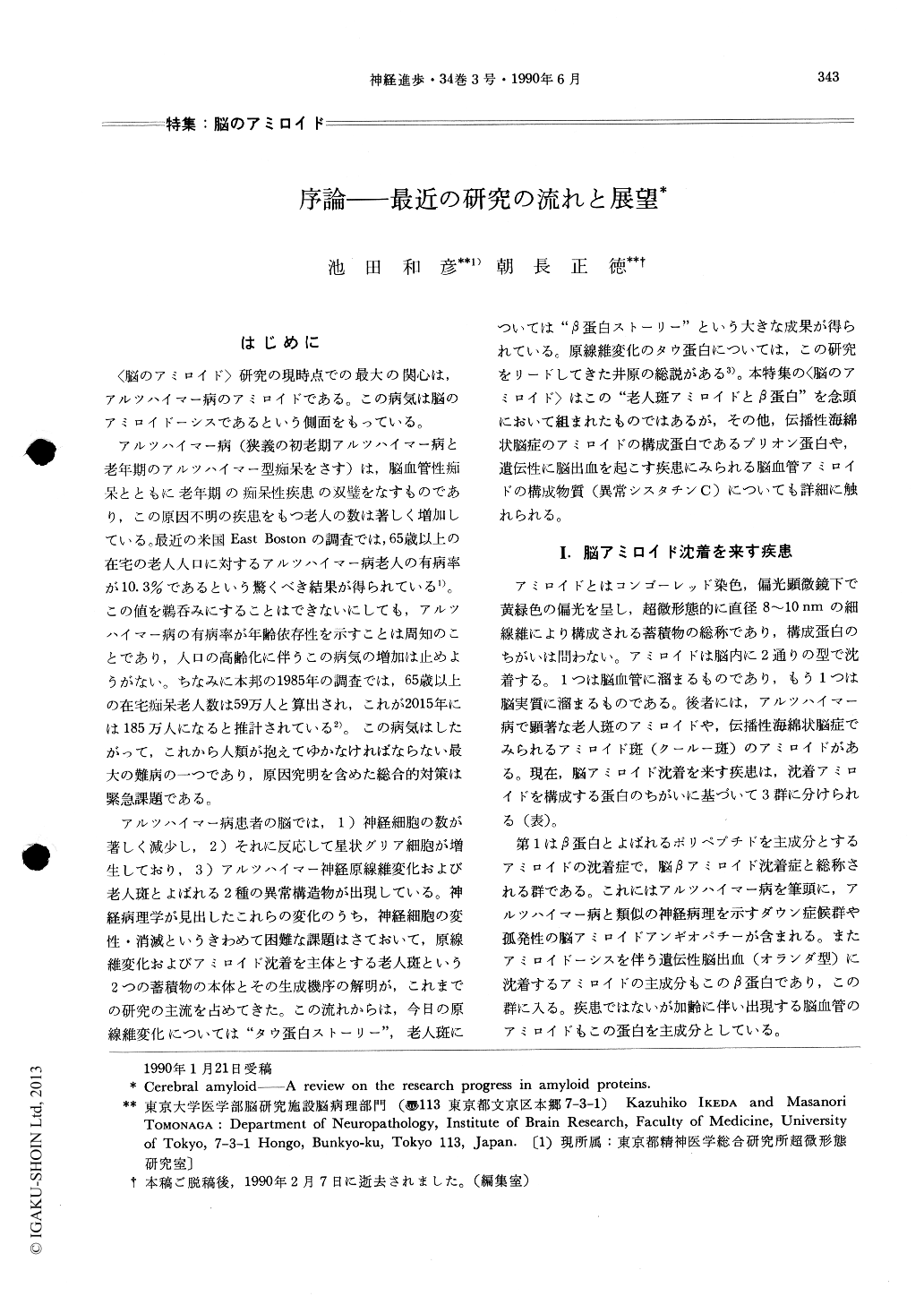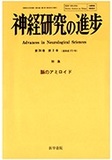Japanese
English
- 有料閲覧
- Abstract 文献概要
- 1ページ目 Look Inside
はじめに
〈脳のアミロイド〉研究の現時点での最大の関心は,アルツハイマー病のアミロイドである。この病気は脳のアミロイドーシスであるという側面をもっている。
アルツハイマー病(狭義の初老期アルツハイマー病と老年期のアルツハイマー型痴呆をさす)は,脳血管性痴呆とともに老年期の痴呆性疾患の双壁をなすものであり,この原因不明の疾患をもつ老人の数は著しく増加している。最近の米国East Bostonの調査では,65歳以上の在宅の老人人口に対するアルツハイマー病老人の有病率が10.3%であるという驚くべき結果が得られている1)。この値を鵜呑みにすることはできないにしても,アルツハイマー病の有病率が年齢依存性を示すことは周知のことであり,人口の高齢化に伴うこの病気の増加は止めようがない。ちなみに本邦の1985年の調査では,65歳以上の在宅痴呆老人数は59万人と算出され,これが2015年には185万人になると推計されている2)。この病気はしたがって,これから人類が抱えてゆかなければならない最大の難病の一つであり,原因究明を含めた総合的対策は緊急課題である。
Cerebral amyloidosis is the most frequent form of localized amyloidosis. The pattern of distribution of amyloid deposits in the brain is restricted to two basic types of pathological changes: (a) extracel-lular amyloid cores of neuritic plaques and (b) cerebrovascular amyloid. The present review mainly concerns research progress in β-protein, which is the major constituent of amyloid found in Alzheimer's brain. Two other proteins, PrP protein and cystatin C variant, that also form amyloid in brain inother disease conditions, are briefly reviewed.

Copyright © 1990, Igaku-Shoin Ltd. All rights reserved.


